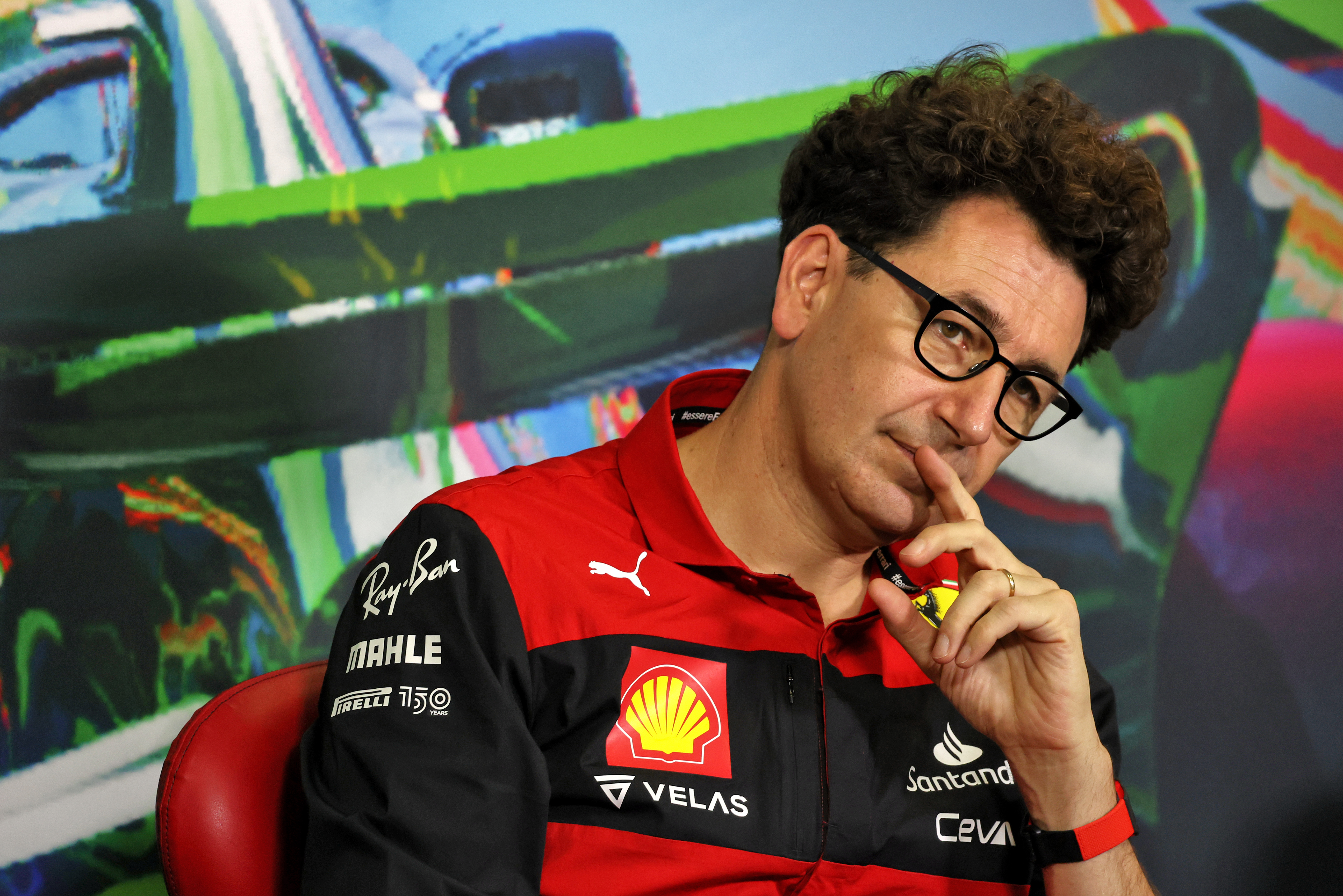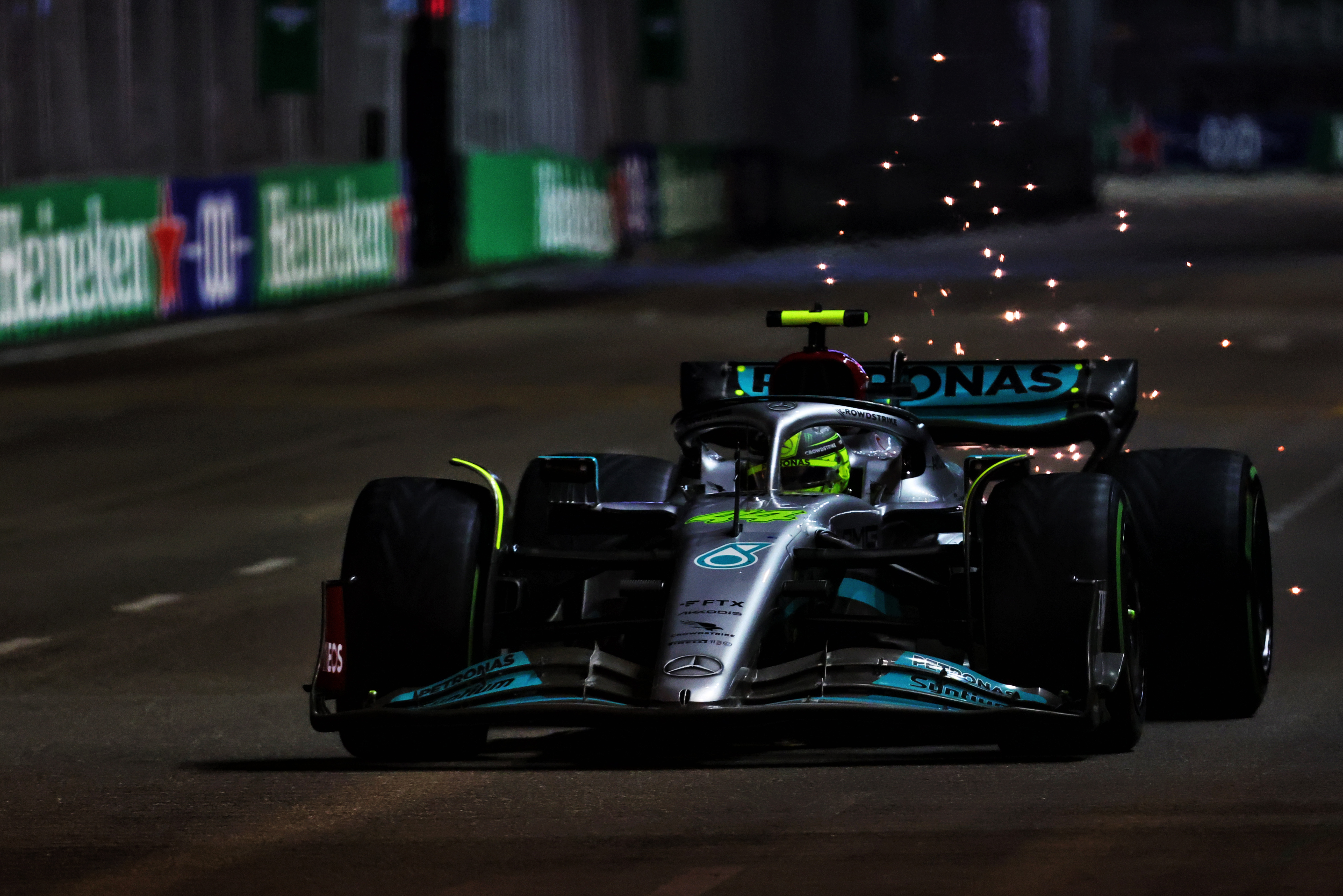Up Next

Ferrari team principal Mattia Binotto and Mercedes boss Toto Wolff argue the use of the word “minor” to describe a Formula 1 cost cap regulations breach of less than 5% of the permitted budget is misleading given the size of the advantage that can be gained by such an overspend.
With the FIA expected to announce two teams – believed to be Red Bull and Aston Martin – breached F1’s cost cap rules in 2021 when the formal certification of teams is completed on Wednesday, F1’s financial regulations have been the subject of intense discussion in the Singapore Grand Prix paddock.
Infringements of F1’s cost cap regulations are split into two categories: ‘minor overspend breach’ and ‘material overspend breach’.
Both involve exceeding the cost cap, but if the overspend is less than 5% of the cost cap it is classified as minor. It is expected that both the 2021 breaches will fall into the minor category.
The delineation between a minor and material overspend breach is significant because the range of potential penalties available is restricted. For a minor breach, this can be a financial penalty and/or a sporting penalty.
The range of sporting penalties available for a minor breach are a public reprimand, deduction of constructors’ championship points, deduction of drivers’ championship points, suspension from one or more stages of a competition (but not the race, only other sessions), limitations to aerodynamic or other testing and reduction of the cost cap.
But in the case of a material breach, the penalties are effectively limitless, stretching all the way to race bans and exclusion from the championship.
With the cost cap baseline figure set at $140million for 2022 (the real figure is higher thanks to additional provisions for extra activities such as sprint races and the increased allowance for inflation), this means a minor breach can amount to an overspend of more than $7m.
Given the competitive advantage that can confer not just for the year in which a breach is committed, but also as a knock-on effect in terms of development for subsequent years, Ferrari and Mercedes argue even minor breaches are hugely significant.
“Apart from implications on last year’s championship there are also implications for the current one,” Binotto told Sky Italia.
“Let’s wait until Wednesday before making a judgement, but whatever amount we are talking about it’s important to understand that even if it is four million, which falls into the category of what is considered a ‘minor breach’, four million is not minor.

“For us, four million represents the development parts for an entire season. Four million means 70 people in a technical department who can come up with and produce solutions that could be worth up to half-a-second a lap.
“So even if we are looking at something considered a ‘minor breach’, it’s not peanuts. We are talking of half-a-second and that advantage is carried forward into subsequent seasons, because while it began in 2021 it still gives a competitive advantage in 2022 and 2023.
“So this is clearly an important matter. It puts the credibility in general [of the cost cap] at stake. I hope that everyone has dealt with this exercise correctly, because otherwise it will be a very big problem to manage.”
Wolff argues that Mercedes’ monitoring of the parts used by rival teams indicates that two of the top three teams are spending at a similar level with the other significantly higher. Although he didn’t name the teams, the implication is that Mercedes and Ferrari are the two spending at the lower level.
He echoed Binotto’s concerns about the formal use of the word “minor” to describe a breach of less than 5% of the cost cap, suggesting it is incorrect.
“I think the word [minor] is probably not correct because if you’re spending $5million more and you’re still in the minor breach, it still has a big impact on the championship,” said Wolff.
“To give you an idea, we monitor closely which parts are being brought to the track from the top teams every single race [in the] ‘21 season, ‘22 season. And we can see that there are two top teams that are just about the same and there is another that spends more.

“We know exactly that we’re spending three-and-a-half million a year in parts that we bring to the car. And then you can see what difference it makes to spend another 500,000. It would be a big difference.
“We haven’t produced lightweight parts for the car in order to bring us down from a double digit [kg] overweight because we simply haven’t got the money, so we need to do it for next year’s car.
“We can’t homologate a lightweight chassis and bring it in because it’s just two million that we would be over the cap. So you can see every spend more has a performance advantage.
“There is a catalogue of penalties that the FIA needs to decide what’s appropriate [to apply] or whether this goes to the cost cap adjudication panel, which is the governance. We need to see what the outcome is and then one can comment.
“But all the stakeholders in this sport, all the teams that have complied to the regulations, the FIA, Formula 1, need to make sure that these regulations have teeth. Because for the aforementioned reasons, you can gain a real competitive advantage.”
Red Bull team principal Christian Horner argues that Red Bull is fully compliant with the cost cap, but backed the fact that the regulations clearly prescribed the different penalties available for minor and material breaches.
“We believe we’re fully compliant and within the cap,” said Horner.

“But then, of course, there is a preset regulation for whether it’d be a procedural breach like Jost [Capito, Williams team principal] had, or a minor breach, or a material breach and a suite of penalties that is open to the regulator.
“So it’s actually pretty prescribed what are the potential consequences for different variants and variables of breach. So, of course, it’s the first year and you know that’s why it has taken so long for the FIA to get to this point.”







